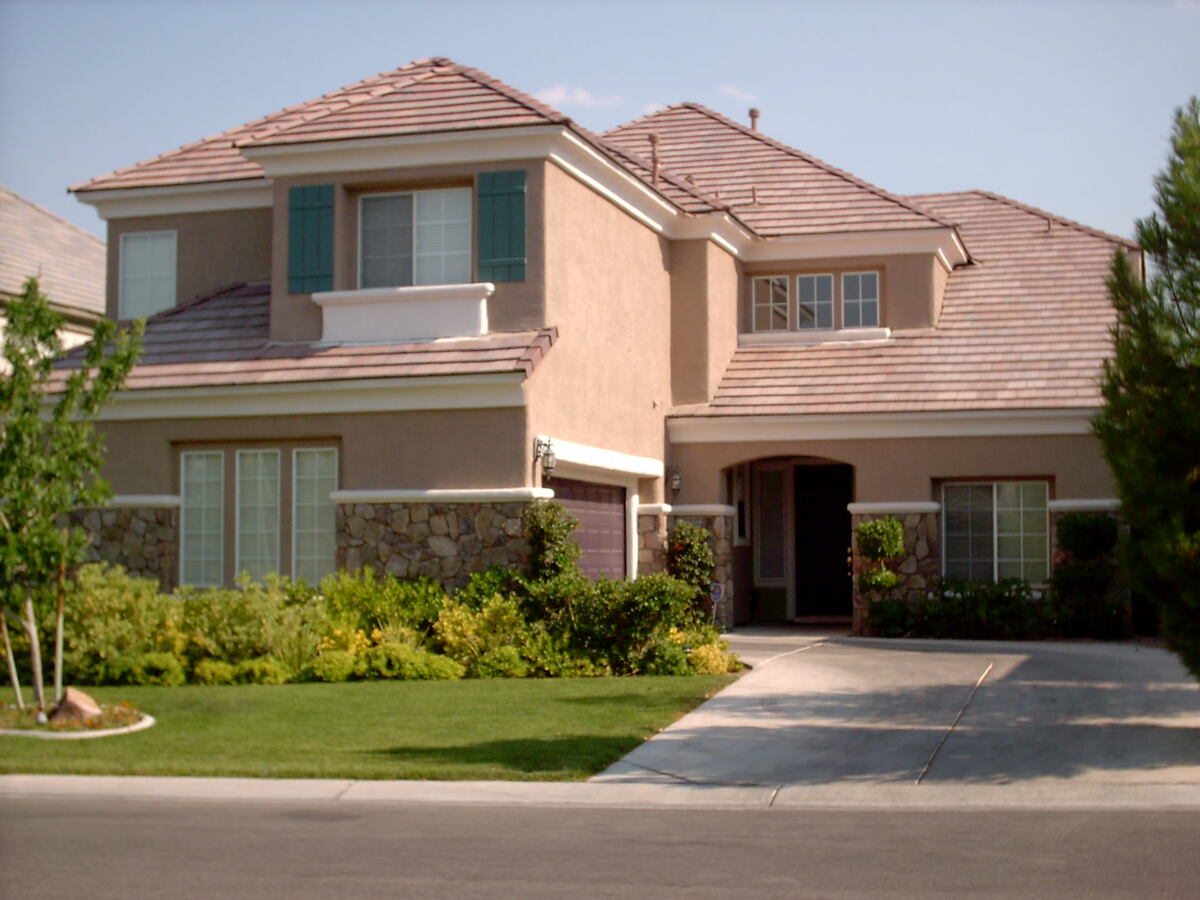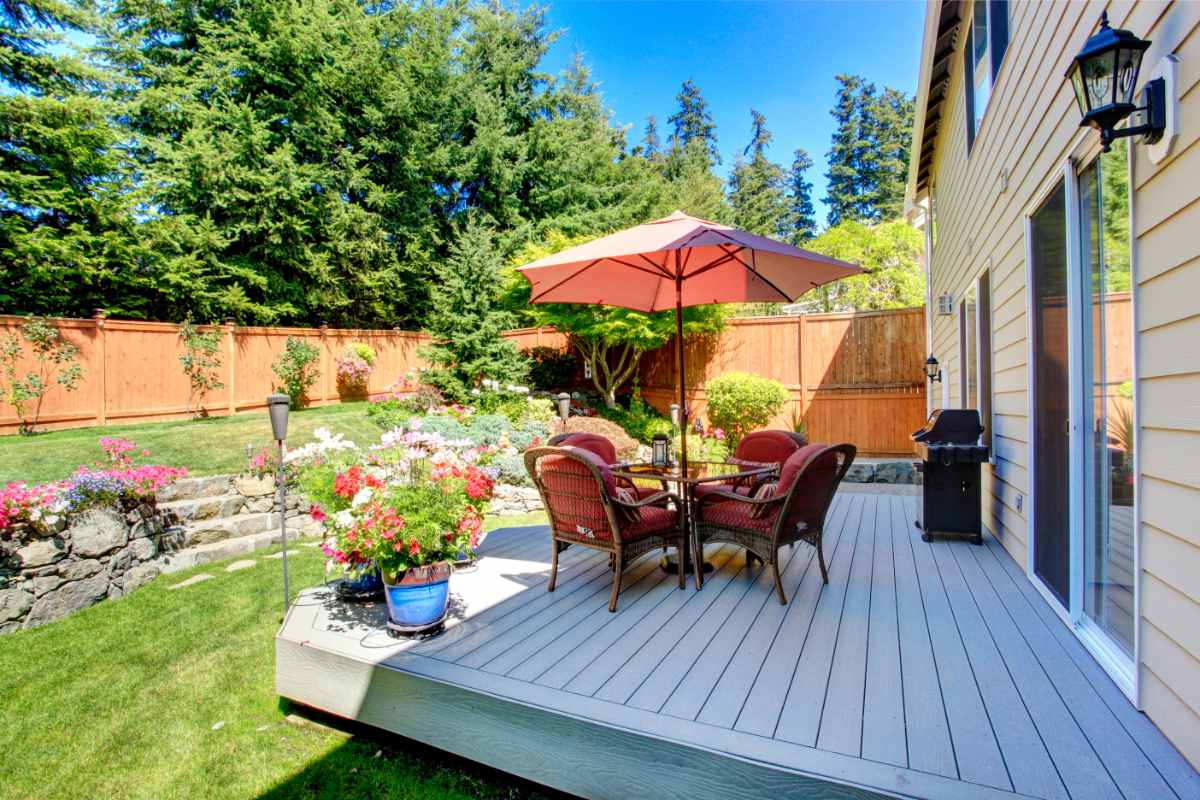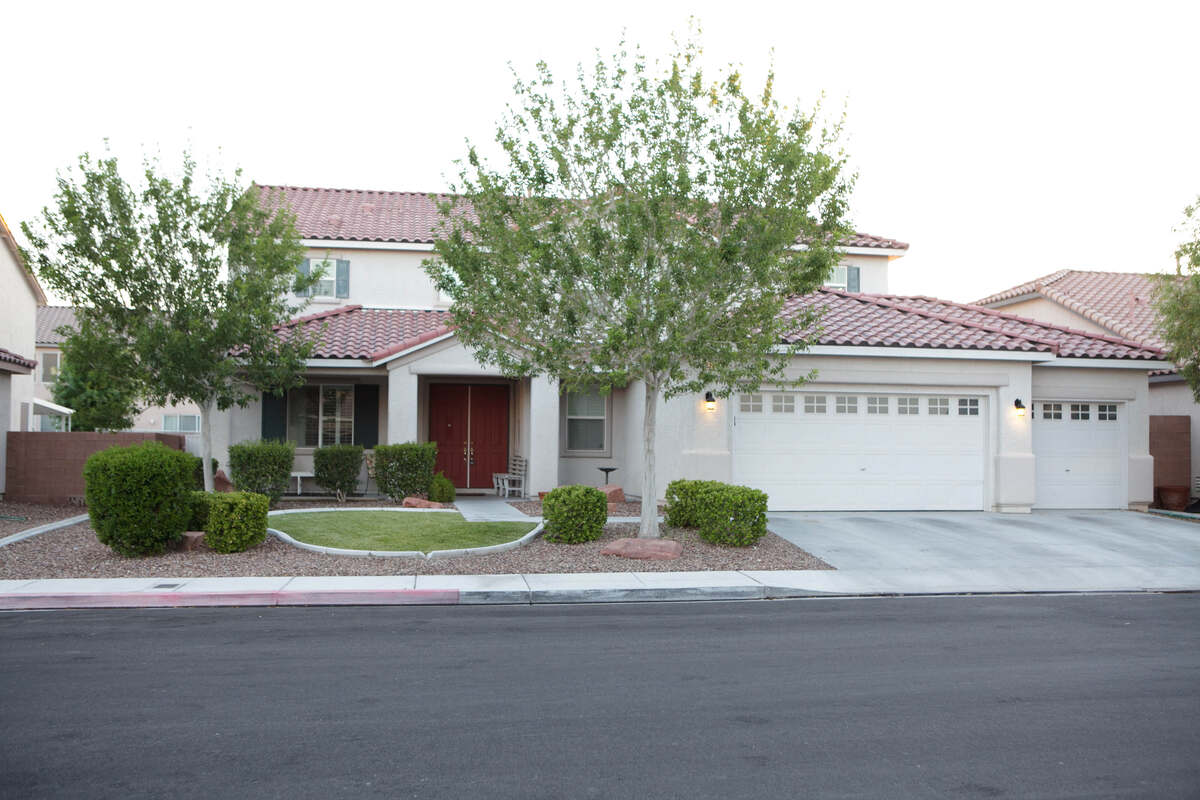
In the heart of the desert, Las Vegas homeowners are all too familiar with the challenges of maintaining lush, green lawns under the relentless Nevada sun. This quest has led many to explore water-wise alternatives for lawns in Las Vegas, which is what we’re about to explore in this article.
It’s not just about ditching the grass; it’s about reimagining your outdoor space to be as beautiful as it is water-wise. In addition, the recent legislation banning new grass lawns for business and multifamily properties underscores the state’s commitment to reducing water usage. So, let’s get started.
What Can I Use Instead of Grass in My Backyard?
Deciding to say goodbye to your traditional grass lawn doesn’t mean you’re signing up for a barren or unattractive backyard. In fact, it opens up a world of creative and eco-friendly possibilities that will also help conserve water, attract pollinators, reduce the need for chemicals, and offer an ease of care that traditional lawns can’t match.
Options include ground covers, native plants, xeriscape gardens, and mulch, among others. Let’s take a detailed look at each one of these options in the next sections.
Easy Lawn Alternatives for Las Vegas
1. Plant Ground Cover Plants
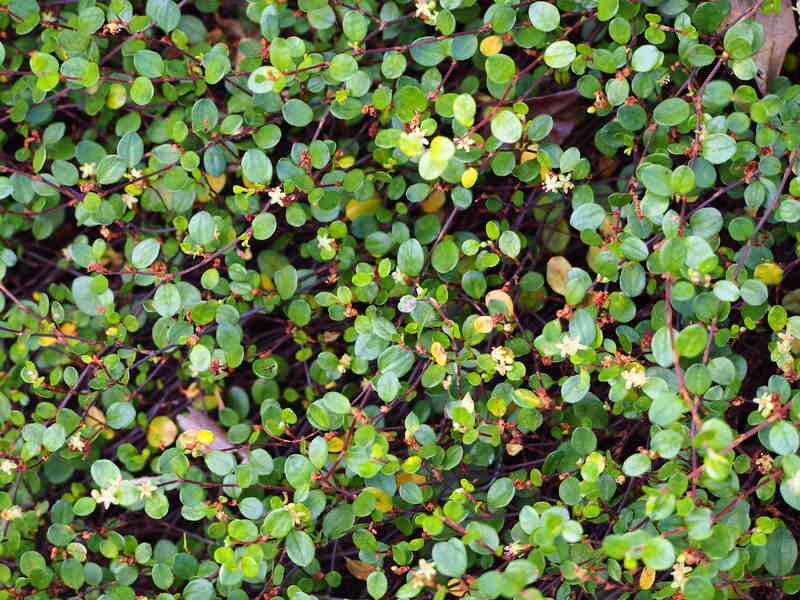
Photo Credit: Agnieszka Kwiecień, Nova / Wikimedia Commons / CC BY-SA 4.0
Ground covers are a great alternative for homeowners who seek the carpet-like appearance lawns usually offer but without the high maintenance and water demands. These ground cover plants help to maintain cooler ground temperatures by retaining moisture and carbon in the soil, and they play a crucial role in preventing soil erosion.
Moreover, the diversity in species means there’s a fit for every need. Here are some desert-adapted ground cover plants for your Las Vegas home:
- Dwarf yarrow (Achillea millefolium ‘Rosea’)
- Silver carpet (Dymondia margaretae)
- Angelina stonecrop (Sedum rupestre ‘Angelina’)
- Red mother-of-thyme (Thymus serpyllum ‘Coccineum’)
- Creeping wire vine (Muehlenbeckia axillaris)
- Gray ice plant (Malephora crocea)
2. Go Native
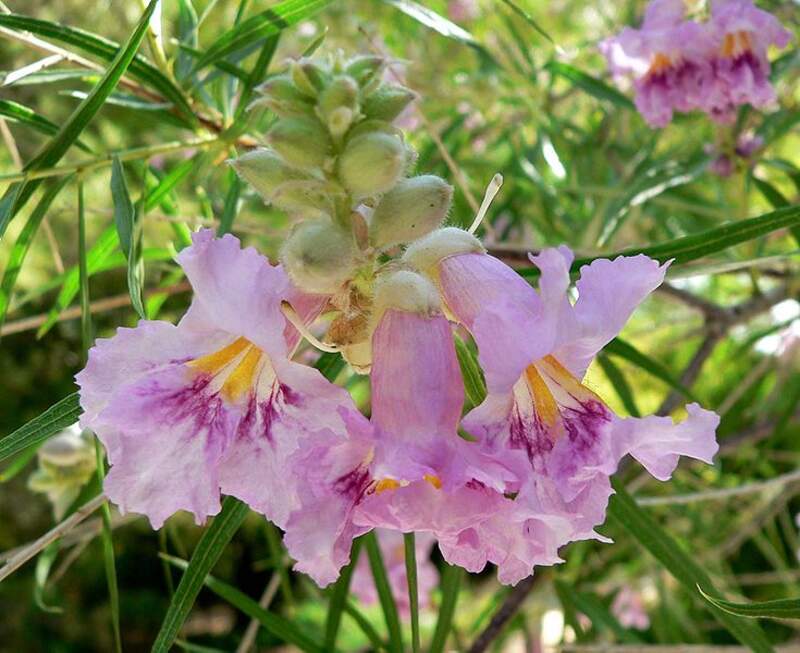
Photo Credit: Stan Shebs / Wikimedia Commons / CC BY-SA 3.0
Native plants are the unsung heroes of Las Vegas gardens. These plants have evolved to thrive in the dry, desert conditions of the area, making them a perfect fit for homeowners seeking a low-maintenance landscape.
Native plants require significantly less water, as they are well-adapted to the region’s natural rainfall patterns. They typically need fewer fertilizers and pesticides than non-native species, and they provide food and habitat for local wildlife and pollinators. What’s not to love about them?
Here’s a list of some Las Vegas native plants to use in your landscape:
- Desert willow (Chilopsis linearis)
- Joshua tree (Yucca brevifolia)
- Creosote bush (Larrea tridentata)
- Big sage bush (Artemisia tridentata)
- Desert milkweed (Asclepias subulata)
- Mojave sage (Salvia mohavensis)
- Snakeweed (Gutierrezia sarothrae)
- Apache plume (Fallugia paradoxa)
- Desert holly (Atriplex hymenelytra)
3. Consider Xeriscaping
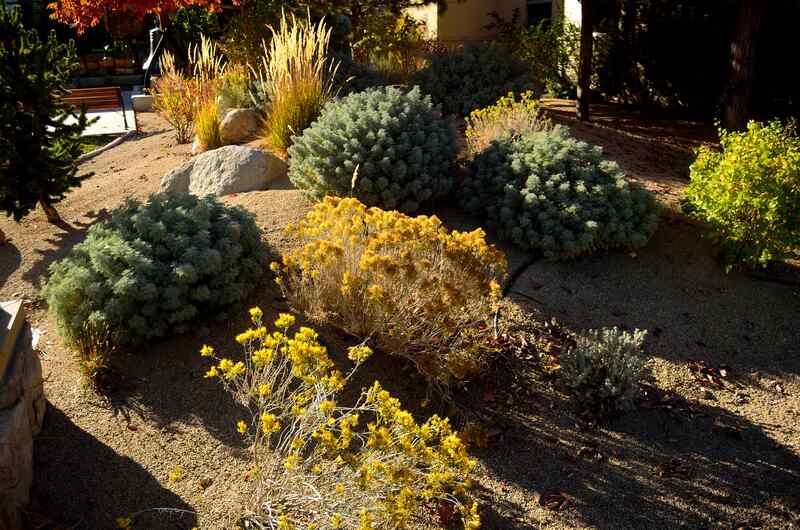
Xeriscaping is an ideal method for homeowners in dry and arid climates like Las Vegas, or for those who simply want a low-maintenance yard. The main goal is to create a landscape that thrives with minimal water input.
Here are some key components of xeriscaping:
- Drought-tolerant plants: Select plants that are naturally adapted to thrive in low-water conditions. This can range from native desert species like the ones we mentioned in the section above to other drought-resistant varieties like succulents, ornamental grasses, and vines.
- Mulch: Applying mulch around plants helps retain moisture, reduce evaporation, and suppress weeds, further reducing the need for water and maintenance.
- Rocks and stones: Incorporating elements like pea gravel, lava rock, and other stones can enhance the garden’s aesthetics and reduce water usage.
- Drip irrigation system: These systems deliver water directly to the base of each plant, minimizing waste.
- Minimal use of turfgrass: This is probably the most important part about xeriscaping since turfgrass is the part of your garden that would use the most water.
If you’re looking for inspiration or practical examples of xeriscaping, pay a visit to the Springs Preserve. Besides commemorating Las Vegas’ history, it also features a botanical garden with beautiful xeriscaping examples.
Tip: Don’t worry if you have a small space, you can still xeriscape. For more tailored ideas in landscaping a small backyard in Las Vegas, check out our guide.
4. Plant Succulents
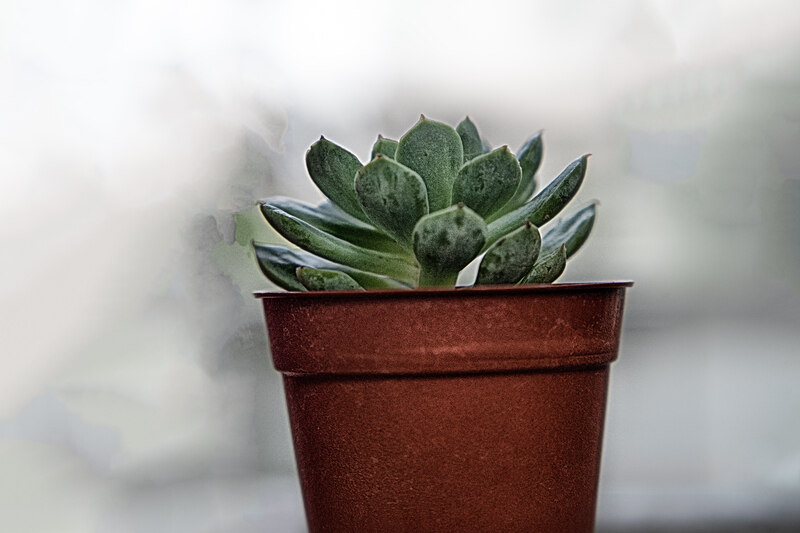
If you’re not ready to commit fully to a xeriscaped yard but still want to embrace drought-tolerant landscaping, consider planting a succulent garden. These plants store water in their leaves, making them perfectly suited for arid conditions.
What makes them even more appealing are the varieties they come in. There are striking hues, diverse shapes and textures, and various sizes for you to choose from.
5. Grow Cacti
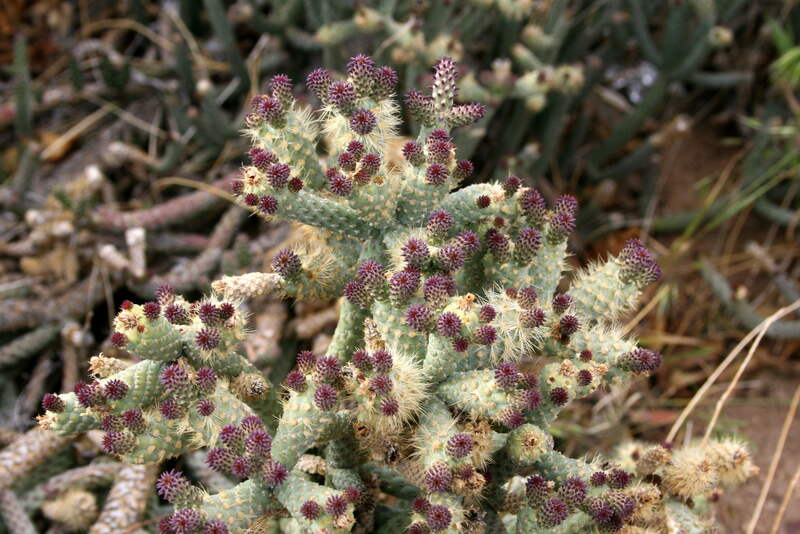
Cacti, much like their succulent cousins, come in an astonishing variety of shapes, sizes, and colors, including many species that produce stunning flowers, going beyond the stereotypical prickly green image.
Here are some beautiful native options for landscaping with cacti:
- Diamond cholla (Cylindropuntia ramosissima)
- Cottontop cactus (Echinocactus polycephalus)
- Compass barrel cactus (Ferocactus acanthodes)
- Mojave prickly pear (Opuntia phaeacantha)
- Nevada agave (Agave utahensis ssp. nevadensis)
Warning: Plan the cacti placement carefully, preferably in areas like raised beds that are less frequented by your younger family members and furry friends. Their thorns can pose a risk to them.
6. Invest in Hardscapes
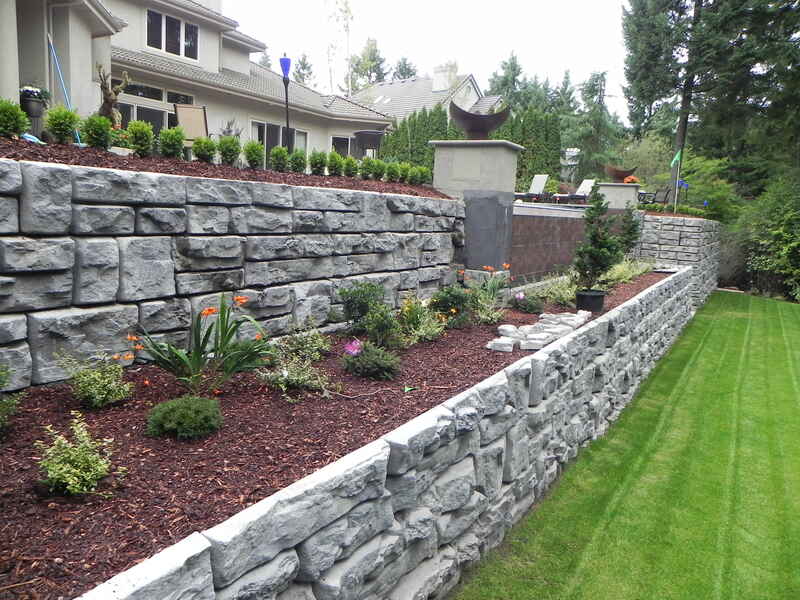
Hardscaping involves the use of solid materials to craft beautiful, functional structures in your landscape. This can boost the curb appeal of your property and also enhance your daily living experience outdoors.
One of the biggest advantages of hardscaping is its low maintenance. Unlike lawns and gardens that require regular watering, pruning, and care, hardscape areas typically need only occasional cleaning to look their best.
Here are some common hardscapes and useful guides about them:
- Walkways (Walkway Ideas)
- Patios (Small Patio Ideas)
- Decks (Cost to Build a Deck)
- Retaining walls (Benefits of Retaining Walls)
- Fire pits (Best Fire Pit Ideas)
- Pergolas (A Guide to Pergolas)
Note: The upfront cost of hardscaping can be higher than plant-based landscaping, but this cost is often offset by the long-term value these structures provide.
7. Grow Ornamental Grasses
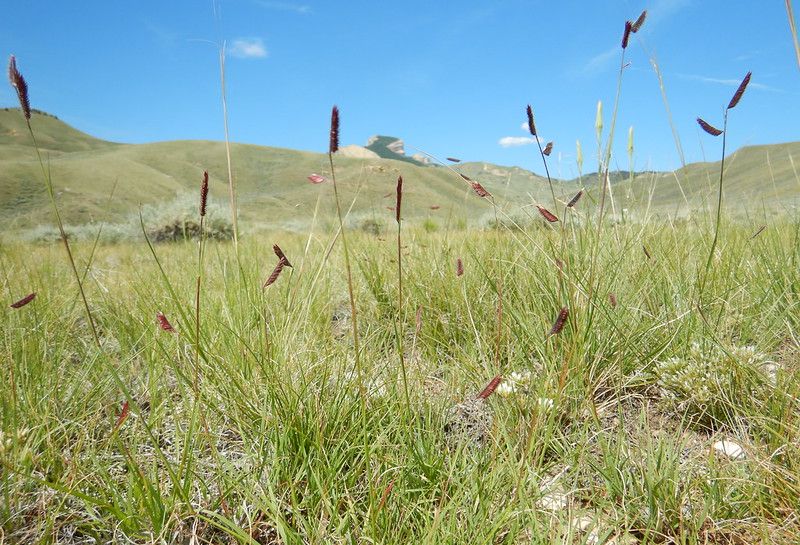
Photo Credit: Matt Lavin / Flickr / CC BY-SA 2.0
Ornamental grasses are a great option if you want to add a touch of greenery around your patio, along pathways, or as accent pieces in your landscape. Unlike common turfgrasses that demand regular watering, ornamental grasses have very little water requirements and high drought tolerance once they are established.
Here are some of the best ornamental grasses for Sin City:
- Indian grass (Sorghastrum nutans)
- Desert needlegrass (Achnatherum speciosum)
- Bull grass (Muhlenbergia emersleyi ‘El Toro’)
- Blue grama (Bouteloua gracilis)
- Autumn glow muhly (Muhlenbergia lindheimeri ‘Autumn Glow’)
- Big galleta grass (Pleuraphis rigida)
- Alkali sacaton grass (Sporobolus airoides)
However, ornamental grasses are not suited to areas of high foot traffic. It’s best to enjoy them visually rather than as a ground cover for walking on.
8. Get an Artificial Lawn
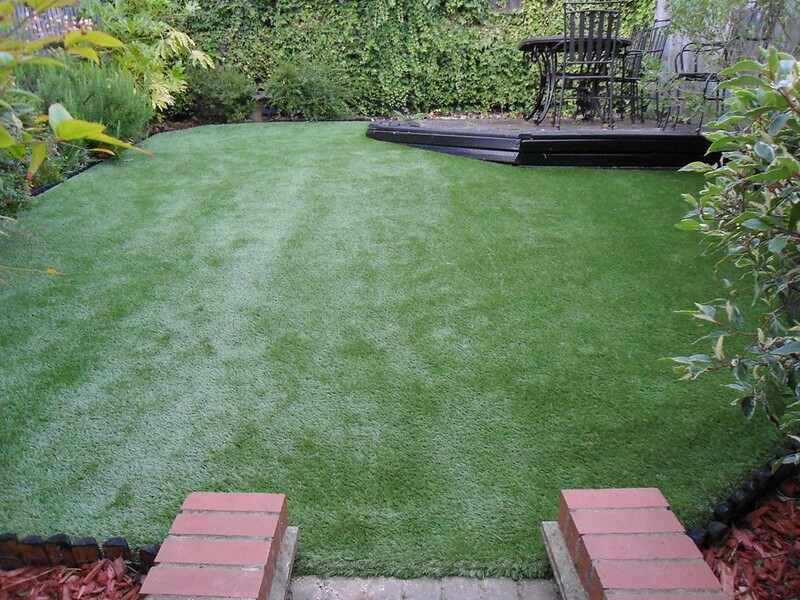
Gone are the days of the blatantly fake, hard-to-the-touch artificial turf. Modern artificial grass has evolved significantly, offering a look and feel that closely mimics natural grass without the upkeep. This makes it perfect for Las Vegas homeowners.
Opting for artificial turf can lead to substantial savings in water usage. In addition, you won’t have to spend a dime on pesticides, fertilizers, and mowing.
Tip: Installing artificial grass costs between $5.45 and $20 per square foot, so include these costs when budgeting your water-wise landscape.
FAQ
Can I Plant Grass in Las Vegas?
No, you can’t plant grass in Las Vegas. You can only have a lawn in your home in Las Vegas if you live in a single-family residence and the turfgrass has already been planted. That’s because, as of December 2021, the Southern Nevada Water Authority (SNWA) approved a resolution prohibiting the installation of grass in new commercial and residential developments to conserve water.
Why is Turf Getting Banned in Las Vegas?
Turf is being banned in Las Vegas primarily because the Southwest region has been experiencing decades of drought. Lake Mead, the source of 90% of Southern Nevada’s water, is at its lowest level since the construction of the dam in the 1930s.
The law banning non-functional grass and prohibiting new grass installation aims to preserve this critical water supply and reduce water usage in response to these conditions.
Can I Get Paid to Remove My Lawn in Las Vegas?
Yes, in Las Vegas, you can get paid to remove your lawn. The SNWA offers rebates to homeowners in single-family residential properties at a rate of $5 per square foot of grass removed. For business and multifamily properties, the rebate is $3 per square foot.
Call in the Pros
Caring for a lawn in Las Vegas is no small feat. If you still have a traditional grass lawn, consider enlisting the expertise of a local Las Vegas landscaping professional. They can provide maintenance to keep your lawn healthy in the desert climate or assist in removing the grass to make way for a more water-wise landscape.
Sources:
Main Image Credit: Mwirig / Wikimedia Commons / CC BY-SA 4.0
